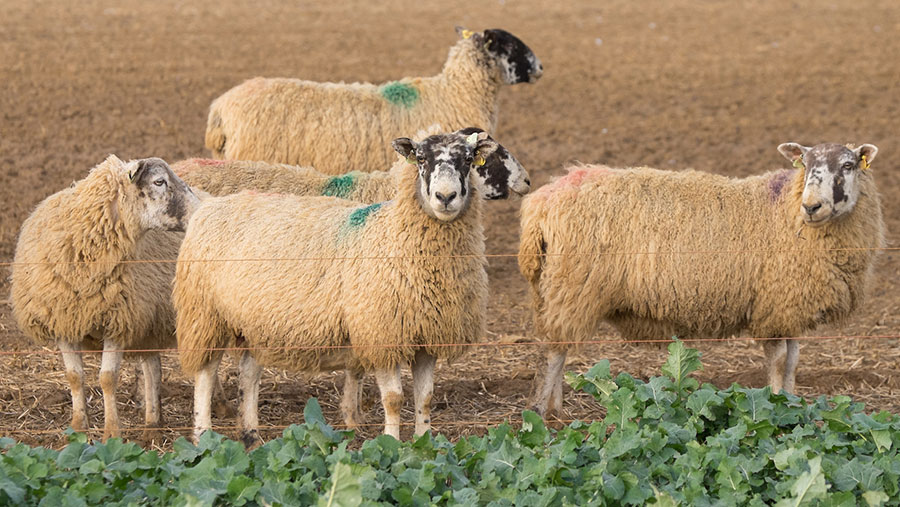Protein forage crops give gains of up to £178/ha, says study
 © Tim Scrivener
© Tim Scrivener Alternative forage crops can produce up to 14t of DM/ha at 20% protein with net financial gains of £178/ha, a five-year research programme has shown.
The Sustainable Forage Protein project run by Bangor and Aberystwyth universities included trials across eight UK livestock farms to assess the potential for reducing costs of production and lowering carbon footprints.
The trials looked at red and white clovers, lucerne, perennial chicory, sainfoin, vetches and various grazing brassicas.
See also: Forage crops helps add value to Scots beef and sheep farm
Adding or increasing the share of forage proteins in swards produced forage with increased crude protein levels, requiring less or no additional protein feed such as soya or rapeseed meal.
Because many forage proteins also fix nitrogen through their roots, the crops provided up to 250kg N/ha, which meant farms substantially reduced or eliminated mineral nitrogen fertiliser.
The legume-fixed nitrogen can then also enhance the productivity of subsequent crops in a rotation, especially if used as a multi-year break crop in arable rotations – increasing output as well as reducing costs.
As well as the practical assessments, the project also carried out economic modelling on integrating home-grown forage protein into farming systems.
The modelling showed the scale of improvements possible with financial performance increased by 20% per kg of lamb, 29% per kg of beef and 10% per litre of milk produced.
Across the systems it demonstrated that net financial gains of £178/ha in dairy, £143/ha beef and £163/ha for lamb were possible on some units.
Protein forage crop benefits |
|||
| Lamb | Beef | Milk | |
| Maximum net financial gain | |||
| Per unit of product (kg or litres) | 20% | 29% | 10% |
| At farm level (ha) | £163 | £143 | £178 |
| Total reduction in carbon dioxide emissions | |||
| Per unit of product (kg or litres) | 27% | 15% | 7% |
| At farm level (ha) | 24% | 14% | 7% |
The project was led by the Waitrose Farming Partnership with co-funding from seed supplier Germinal UK and the government’s Innovate UK grant programme.
Germinal’s Helen Mathieu said: “All of the farms involved have reported tangible gains from the integration of forage protein crops into their systems, with reduced concentrate feeding, higher liveweight gains and greater continuity of production from forage among the main benefits.
A detailed report on the project, Sustainable Forage Protein – a guide to growing, managing and feeding forage protein [PDF], is now available.
